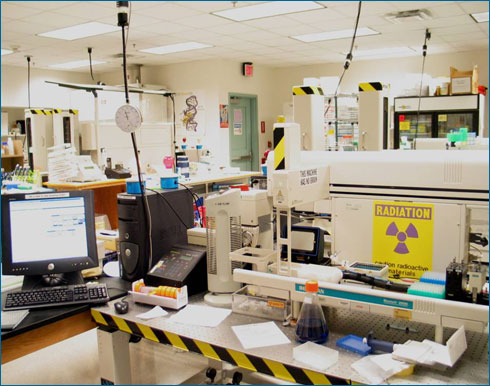The term “directed evolution” is a bit misleading since it might suggest that the scientist directs individual steps in the process (“Tweak this…change that…now rotate this end of the molecule a bit…”). Actually, the only thing that Andy “directs” is selecting the job that the final RNA product ought to perform. The rest of the evolutionary process can be automated — in fact, Andy’s lab has programmed robots to do the tedious, repetitive work.

This process of engineering via evolution is quite different from engineering via design. When Andy sets out to engineer a molecule by evolution, he decides if the molecule ought to bind a particular type of cell, bind a particular protein, or cause a particular chemical reaction. The evolutionary process then tries out more than a million billion (that’s 1,000,000,000,000,000!) different molecules and builds the one that does the job the best. Andy doesn’t know what the “winning” molecule will look like or exactly how it will get the job done — he just knows that it will work.
Machines synthesize billions of DNA sequences, and use them to build the corresponding RNA molecules. The robots then put the RNA to the test to see which molecules can perform the desired task. The RNA sequences that perform best are kept, and most of the rest are weeded out. The selected RNAs are used to build corresponding DNA, which is then copied. These steps are automatically repeated until an almost pure pool of useful RNA is built. Andy’s job here is just to tell the machines what procedure to follow and set the works in motion.
Engineering via design is another story. In this process, the engineer must figure out for him or herself how to get the job done and build a molecule that does that. Andy’s lab sometimes uses design to make specific changes to an almost-finished RNA molecule. This works well for relatively easy problems that they have encountered before, but not for unfamiliar and intractable problems, which are usually best tackled by an evolutionary approach. As Andy suggests, he tends to “use evolution when, in fact, the problems are much harder than the ones we can take on as human designers.”
Learn more about the biotechnology that underlies directed evolution: How to be an evolutionary engineer.
Get tips for using research profiles, like this one, with your students.
